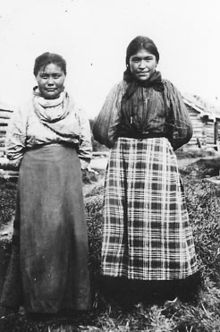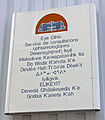Awokanak | |
|---|---|
 Slavey girls, Mackenzie River, Northwest Territories | |
| Total population | |
| 2,630 (2016 census) [1] | |
| Regions with significant populations | |
| Canada (Northwest Territories, Alberta) | |
| Languages | |
| English, North and South Slavey language | |
| Religion | |
| Animism, Christianity, Slavey Religion | |
| Related ethnic groups | |
| Sahtu (North Slavey) |
The Slavey (also Awokanak, Slave, and South Slavey) are a First Nations group of Indigenous peoples in Canada. They speak the Slavey language, a part of the Athabaskan languages. Part of the Dene people, their homelands are in the Great Slave Lake region, in Canada's Northwest Territories, northeastern British Columbia, and northwestern Alberta.


